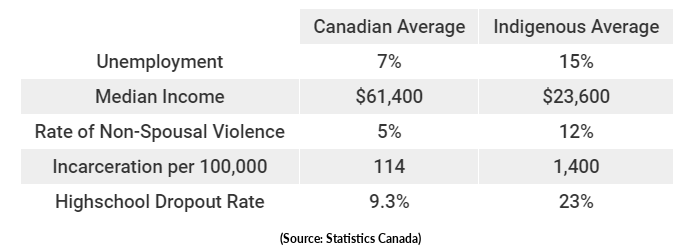
IDC Newsletter 2020-07-01
Welcome the inaugural IDC newsletter. In this issue we have two articles responding to the wave of protests that have been triggered by the killing of George Floyd. ‘Yes, Canada is racist too’ explores the history of discrimination against people of color in Canada while ‘How to protest safely’ gives some tips for people thinking about participating in protests themselves.
We also have two articles reflecting on what the ongoing COVID crisis means for Canada and the world. ‘Means-testing is mean’ critiques the Canadian government’s obsession with limiting access to emergency response benefits while ‘Work in the age of pandemic’ reflects on the elements of work that are truly essential, and what elements COVID has shown we can discard.
If these topics interest you, check out ‘What is the IDC?’ to learn more about our organization and ways you can get involved.
Yes, Canada is racist too
Explicit racism was sanctioned by the Canadian government until 1960, after discrimination from employers, labour unions, landlords, and schools was declared legal in 1939. Because of this, people of colour are overrepresented in precarious job markets. Despite Black Canadians being more likely to achieve post-secondary education than white Canadians, 44% of Canadian Black children live in poverty.
The historical recency of this policy is a key motivator of racial inequality across Canada, and the effects reach nearly every aspect of life.

This graph doesn’t take into account less tangible but even more disturbing facts, such as the crisis of Missing and Murdered Indigenous Women and Girls, or Canadian police’s grim history of “starlight tours,” a practice in which police would drop Indigenous people outside city limits on freezing cold nights to let them die of exposure.
Slavery in Canada was abolished in the late 1800s, right? Sorry, but no. Japanese Canadians were used as slave labour in the 1940s while imprisoned in internment camps as POWs. And Chinese immigrants were brought to Canada to work on the railroad, but paid barely enough to cover the railway’s cost of room and board, trapping them in a cycle of perpetual servitude.
It’s hard to tell ourselves that these practices aren’t still being used when you consider that prison labour earns inmates a maximum of $6.90 per day, often amounting to as little as $1.95 after deductions.
The fact that the Canadian government has made an attempt to hide its racist intentions gives those arguing in bad faith, or denying their position out of guilt, an easy out by comparing us to our Southern neighbours. This veneer of politeness does not make our material conditions any better, it just makes it harder to argue against, but armed with the proper information the myth that “Canada isn’t racist” is easily dispelled.

- Image credit: @Canadapoast
How to protest safely
The aspiring protester in 2020 must find ways to keep themselves safe from the twin dangers of COVID and the police. COVID is merely an errant strand of RNA that can have no conception of the havoc it’s causing humanity. The police, on the other hand - are another matter.
Staying safe from the police
The Nib has published a ‘Safer in the streets’ comic which summarizes a variety of tactics that aim to frustrate police attempts to suppress street protests. The main takeaways are to keep together in a block, stay mobile, avoid getting surrounded by police and avoid getting arrested. The Nib even provides a black-and-white version that can be printed and distributed at protests to inform others.
Wired has a rundown of items you may want to consider bringing with you to a protest, as well as items that might be better left at home. Cell phones are a real pain-point here, because they’re probably the most common device people use to film police, but they also provide a lot of information about your location and communication to the authorities.
Staying safe from COVID
Although some health authorities have given advice on precautions to take while protesting, there’s still a lot of danger involved in going to an event where you’ll be in contact with large numbers of people. The CDC says anyone over 50 and anyone with basically any ongoing health condition is at increased risk of severe illness. If you fall into those groups, or you’ll be in regular contact with someone who does, it’s worth giving serious consideration to whether you should attend an in-person protest at all.
For those who decide to attend protests, the recommendations from health experts have basically been the same as for anyone leaving their home during the outbreak: wear a mask, try and stay 2 meters away from others and regularly wash your hands or use hand sanitizer. The difficulty comes when COVID precautions conflict with precautions taken against the police. Keeping 2 meters between you and everyone else is already practically impossible in any crowd, and becomes even more difficult when you’re trying to ‘fill in’ space to avoid a police flank. Contingencies like these will likely have to be worked out ad hoc, on-the-ground.
Means-testing is mean
With COVID came the CERB, and now we all get a real-time reminder of why means-testing is dumb and universal support is cool:
With a means-testing CERB you need to meet the criteria such as: you have lost work due to COVID (but not if you quit due to unsafe work conditions—but also maybe if you did?), are not on EI (or, maybe, but only if you’re a fisher?) and have made at least $5000 in work-related income the 2019 tax year, and have not or will not make $1000 in the upcoming two weeks or maybe month (you can still see the future, right? It’s not just me?). Then next year you’ll have to pay the government back because it’s all considered taxable income. If you don’t know if you check all these boxes, but really need the money, don’t worry—a false application will just get you fined $5000 and/or six months in jail for fraud. If you know you don’t qualify, well…

With a universal CERB, you’d just get the money. It’s all good. No, no questions, do what you want with it. It’s just your money. Pay the government back? Sure, let’s do that with, I dunno, something like a 79% tax on all income over $5 million dollars? Maybe we could even try a 100% tax on all wealth over $5 million dollars a year? People can get by with $4.9 million dollars a year, right?
Yeah. So you’d be covered. You’d be fine. You’d be safe.
- Image credit: u/MidnightTokr
Work in the age of pandemic
Back in 1964 Arthur C. Clarke predicted that by the year 2000 cities as we know them would no longer exist. We would live in a world of instant communication where we could contact anyone on Earth without leaving our home. This technology would make it possible for many people to conduct business without having to be present at a specific physical location. Today, we know the technology Clarke was talking about as the Internet. And while his technological predictions could not have been more correct, he severely underestimated the pace of social progress.
Despite modern office jobs being done entirely on a computer, most workers are still expected to get up in the morning, battle the daily commute, and physically congregate at the office to work. Companies have given innumerable arguments for why this must be so, and until recently there wasn’t an empirical way to test any of them.
Unfortunately, it’s often difficult to tell whether an argument holds water without running an experiment since ideas that sound great on paper can spectacularly fail in practice. However, the pandemic presented a unique scenario where it was no longer safe to continue following these practices resulting in a forced experiment of mass remote work across the world. We now know beyond a shadow of a doubt that remote work was possible all along, and a recent study shows that there is no loss of productivity associated with it. It would appear that the main barrier to remote work was the desire to stick with the familiar. Now that this valuable experiment has been run we shouldn’t simply discard the results, but rather learn from it.
As we start coming out of the pandemic, workers should demand the ability to continue working remotely. There is no longer any justification to keep up the daily commute.
What is the IDC?
The International Department of Citizenship (IDC) is an organizing body dedicated to empowering citizen projects which lay the groundwork for revolution and allow workers to control the means of production in a democratic and decentralized world.
The IDC was created in April 2020 as a response to a ‘State of the left’ survey conducted by the r/canadaleft subreddit. The survey revealed a degree of pessimism in leftist circles, with large majorities considering various facets of Canadian life to be in regression or outright collapse. Some respondents expressed a frustration with existing leftist organizations, finding that they acted as silos which missed the opportunities for collaboration made possible by modern tools. However, the survey also highlighted the fact that many people wanted to get more involved in leftist action, but felt they lacked the instruction and direction necessary to be effective.
A central goal of the IDC is to provide people the direction they need to get involved in causes that are important to them. The initial plan for the IDC was for there to be a number of geographically-based chapters that were formally autonomous from one another but collaborated on shared interests and pooled resources. However, due to the COVID-19 outbreak, the first IDC chapter was instead organized online. We hope to begin setting up regionally-based chapters once pandemic precautions have been loosened.
To learn more about the IDC, or to submit an application to join, visit: https://1.joinidc.co/
Credits
- Yes, Canada is racist too - UnionDog
- How to protest safely - loljapes
- Means-testing is mean - jonkle
- Work in the age of pandemic - yogthos
- What is the IDC? - loljapes, mattjdan
Licensing
The JI Newsletter is licensed under a Creative Commons Attribution-ShareAlike 4.0 International license. If using material from the newsletter, please credit the author and provide a link to the relevant newsletter in your attribution. Any content produced using material from the JI newsletter must be licensed under the same terms.